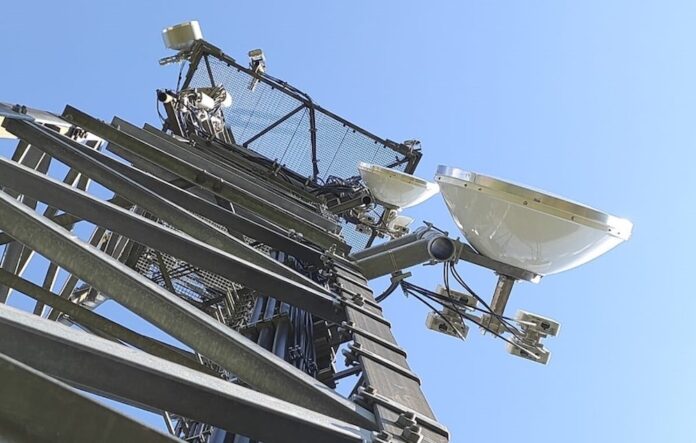However, in many markets, the momentum is driven by undercutting fixed line pricing constructs
Fixed wireless access (FWA) is predicted to deliver a healthy 14% CAGR 2023-29, reaching almost 265 million subscribers by 2029. And of this, 5G FWA is expected to account for 45% of the total subscription base by 2029, reaching 118 million at a CAGR of 35%. These figures are according to ABI Research’s latest report.
Admittedly, operators like India’s Reliance Jio are skewing the numbers – they alone have committed to reaching 100 million 5G FWA-connected premises in India – but ABI still believes the growth reflects the expanding role of FWA technology in enhancing connectivity worldwide in densely populated and remote areas.
Earlier this week Analysys Mason were less bullish, instead highlighting the subscriber in-fill model where operators utilise spare capacity on their mobile networks to offer FWA services and increase their presence in fixed broadband markets. This approach, they say, will mean FWA revenues only account for 4% of fixed broadband connections worldwide in 2027 – but will still be able to disrupt fibre builds.
So, what is going on here? As with all access technologies it comes down to price and economics. Provided it doesn’t impact a telco’s 4G and 5G mobile subscribers, FWA remains a cost effective to attract customers looking for higher speeds but balking at the potential cost of moving to a fibre network.
The “cost is a thing” market
You don’t need to look far to see how cost can impact subscribers and subsequently change the economics for FWA. For example, Poland is one of the cheapest countries in the EU for fixed broadband services and still its market is being impacted by subscribers opting for cheaper FWA alternatives to the point where the regulator has recognised that fibre tak-ep is slowing overall.
Telko.in has dissected the latest market report by regulator UKE which demonstrates this point clearly. After a sharp increase in interest in access to optical fibre in 2020-2021 due to the pandemic, the enthusiasm for purchasing FTTH connections has declined. According to the UKE study, in 2023 there was a decrease in the percentage of households using fibre-based internet (by 8 percentage points compared to 2021). It decreased from 50% in 2021 to 42% in 2023.
Since 2021, the percentage of households whose members do not use the Internet at home has halved but rather than this going to fibre, there has been solid increases in accessing the internet “in mobile phones (+16%) and LTE home mobile internet (+9.5%). The most frequently mentioned reason for not taking advantage of the offer of connecting to a fibre optic network is the “too high monthly cost of such a service” – indicated by 40.2% of survey respondents.
The artificial price construct market
In Australia, the fixed line broadband market is dominated by the government-owned National Broadband Network and wholesale prices are historically high meaning the most popular speed tier in the country is 50Mbps. The three mobile operators Telstra, Optus and TPG have strong 4G LTE networks and as a result, by the end of 2022 the regulator ACCC reported there were more than 400,000 home wireless broadband services supplied by mobile operators at the end of 2022, around 5% of the broadband market.
The arrival of 5G has made the business case for 5G FWA for the three MNOs a no-brainer to the point that they have had to carefully manage network congestion given FWA users consume way more data than mobile users in the same cell. A typical NBN download speed of 50Mbps costs roughly A$85 per month, but Optus and TPG provide FWA 5G broadband at the same speed but for A$10-15 less. Towards the end of last year, NBN Co warned that “accelerating” competition from mobile broadband endangered its market share and profitability.
Last month, NBN Co finally reacted to the FWA threat – and to its stagnating fibre take-up figures – announcing it would quintuple download speeds on its Home Fast product at no extra cost to retail service providers. This will see wholesale download speeds accelerate from 100/20Mbps to 500/50Mbps.
FWA is still improving
ABI’s 5G, 6G, and Open RAN research analyst Larbi Belkhit said as the demand for a more connected world continues to grow, the performance and efficiency of FWA technology remain a key driver in bridging the connectivity divide, providing high-speed, reliable internet access in both the enterprise and consumer markets.
“Furthermore, technology advancements in the 5G FWA space are also playing a key role, with ZTE announcing the world’s first AI 5G FWA CPE in the market during Mobile World Congress in 2024, improving the bandwidth utilization and reducing network congestion of 5G CPEs, further driving the adoption of this technology,” he added.
To show how far the technology has come, Italy provided a good example yesterday in a collaboration between wholesaler Open Fiber and Intracom Telecom. Since 2019, Open Fiber has been pioneering in the use of FWA for rural networks in Italy, with an extensive deployment. In 2022 it took part to the tender for “Italia 1 Giga” plan and was awarded by the Italian government the rollout in eight provinces.
The two companies just completed field tests at one of Open Fiber’s commercial sites in Puglia, South Italy. With Intracom’s WiBAS G5 dual-BS hub and G5 GigaConnect terminals operating at 28GHz the two managed to deliver 1Gbps at 5km.


